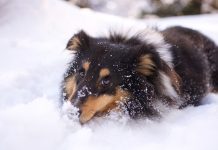History and Origins of the Scottish Terrier Breed

The Scottish Terrier, also known as the “Scottie,” is a small and sturdy breed of terrier with a rich history dating back several centuries. Here’s an overview of the history and origins of Scottish Terriers:
- Origins in Scotland:
- The Scottish Terrier originated in Scotland, particularly in the Highland regions, where they were bred for their hunting abilities.
- They were developed to hunt vermin, such as rats, foxes, and badgers, making them excellent working dogs for farmers and landowners.
- Early Development:
- The exact ancestry of the Scottish Terrier is not well-documented, but they are believed to share common roots with other terrier breeds from Scotland.
- They were selectively bred for their ruggedness, tenacity, and ability to work independently in challenging terrains.
- Breed Standard:
- The Scottish Terrier was recognized as a distinct breed in the late 19th century and has since become one of the most iconic terrier breeds in the world.
- The breed standard was established to preserve their unique characteristics, including their compact size, wiry coat, and distinctive appearance.
- Popularity and Symbolism:
- Scottish Terriers gained popularity among royalty and nobility in the 19th century, with Queen Victoria being a notable enthusiast of the breed.
- They became a symbol of Scottish pride and are often associated with Scottish culture and heritage.
Physical Characteristics and Appearance of Scottish Terriers
Scottish Terriers have a distinctive and recognizable appearance that sets them apart from other terrier breeds. Here are the key physical characteristics and appearance traits of Scottish Terriers:
- Size and Build:
- Scottish Terriers are small to medium-sized dogs, typically weighing between 18 to 22 pounds (8 to 10 kg) and standing around 10 to 11 inches (25 to 28 cm) tall at the shoulder.
- They have a sturdy and well-proportioned build with a strong, muscular body.
- Head and Face:
- Scottish Terriers have a large, domed head with a pronounced stop.
- They have a distinctive beard, bushy eyebrows, and a keen, alert expression.
- The muzzle is short and powerful, giving them a determined appearance.
- Coat and Color:
- Scottish Terriers have a dense, wiry outer coat that is weather-resistant, with a soft undercoat.
- Coat colors include black, wheaten (pale yellowish-brown), or brindle (striped) patterns.
- Regular grooming is necessary to maintain their coat texture and prevent matting.
- Tail:
- Scottish Terriers have a short, erect tail that is carried upright.
- The tail is traditionally docked in some countries, although this practice is becoming less common.
- Legs and Feet:
- They have short, straight legs with well-muscled thighs.
- The feet are compact and round, with strong, arched toes.
- Gait and Movement:
- Scottish Terriers have a confident and purposeful gait, with a smooth and efficient movement.
- Despite their small size, they are agile and capable of quick bursts of speed.
- Overall Impression:
- Scottish Terriers are characterized by their bold and dignified demeanor, combined with a feisty and spirited personality.
- They are known for their independent nature and loyalty to their families.
Scottish Terriers are beloved for their distinctive appearance, lively personality, and unwavering loyalty. They make excellent companions for individuals and families who appreciate their unique charm and spirited nature. Regular exercise, proper grooming, and consistent training are essential for keeping Scottish Terriers happy and healthy in their homes.
Scottish Terrier Temperament and Personality Traits
Scottish Terriers, often referred to as “Scotties,” are renowned for their unique and spirited temperament. Here are some key personality traits and characteristics commonly associated with Scottish Terriers:
- Independent and Self-Assured:
- Scotties are known for their independent nature and self-assured demeanor. They are confident dogs with a strong sense of identity.
- Loyal and Devoted:
- Scottish Terriers form strong bonds with their families and are fiercely loyal to their owners. They thrive on companionship and enjoy being close to their loved ones.
- Alert and Watchful:
- Despite their small size, Scotties are vigilant and alert watchdogs. They have keen senses and are quick to alert their owners to any perceived threats or disturbances.
- Bold and Feisty:
- Scotties have a spirited and determined personality. They are not easily intimidated and will stand their ground when faced with challenges.
- Intelligent and Inquisitive:
- Scottish Terriers are intelligent dogs that enjoy mental stimulation. They are curious and like to investigate their surroundings.
- Energetic and Playful:
- While they have a dignified demeanor, Scotties are playful and energetic dogs. They enjoy interactive games and activities that engage both their mind and body.
- Territorial and Protective:
- Scotties have a natural instinct to protect their home and family. They may be wary of strangers and can exhibit territorial behavior.
- Sociable with Familiar People:
- Although they can be reserved with strangers, Scottish Terriers are affectionate and sociable with their family members. They enjoy spending quality time with their loved ones.
- Stubborn and Determined:
- Like many terrier breeds, Scotties can be stubborn at times. They have a strong will and may require patient, consistent training.
- Low Tolerance for Rough Handling:
- Due to their dignified nature, Scotties may not tolerate rough handling or overly boisterous behavior. They prefer respectful interactions.
Training and Socialization Needs for Scottish Terriers
Scottish Terriers are intelligent dogs but can also be independent thinkers, which can make training a bit challenging. However, with patience, consistency, and positive reinforcement techniques, Scotties can excel in obedience and manners. Here are some training and socialization tips for Scottish Terriers:
- Early Socialization:
- Start socializing your Scottie puppy from a young age. Expose them to various people, dogs, and environments to help them become well-rounded adults.
- Positive Reinforcement:
- Use rewards-based training methods such as treats, praise, and play to motivate your Scottie during training sessions.
- Avoid harsh corrections or punishment, as this can lead to resistance and mistrust.
- Basic Obedience Training:
- Teach essential commands such as sit, stay, come, and heel using consistent and patient training techniques.
- Keep training sessions short and engaging to maintain your Scottie’s interest.
- Channel Their Energy:
- Provide regular exercise and mental stimulation to prevent boredom and destructive behaviors.
- Engage in interactive play sessions and activities that tap into your Scottie’s natural instincts, such as scent games or agility training.
- Consistent Leadership:
- Establish yourself as a calm and confident leader in your Scottie’s eyes. Be consistent with rules and boundaries to reinforce good behavior.
- Patience and Persistence:
- Understand that Scotties can be independent and may require extra patience during training.
- Stay persistent and avoid giving in to stubborn behaviors.
- Avoid Overprotection:
- While Scotties are naturally protective, it’s essential to expose them to different situations and people to prevent overprotective behaviors.
By providing early socialization, positive reinforcement training, and consistent leadership, Scottish Terrier owners can help their dogs thrive and become well-mannered companions. Scotties excel in homes where they receive love, attention, and mental stimulation to keep their active minds engaged.
Health Considerations and Common Issues in Scottish Terriers
Scottish Terriers are generally a healthy and hardy breed, but like all dogs, they may be prone to certain health conditions. It’s essential for Scottish Terrier owners to be aware of potential health issues and work closely with their veterinarians to ensure their dogs’ well-being. Here are some common health considerations in Scottish Terriers:
- Scottie Cramp:
- This is a hereditary condition that causes muscle spasms and coordination issues, particularly during moments of excitement or stress.
- Symptoms may include a wobbly gait, stiffness, or collapse. While it can be concerning, most Scotties with cramp lead normal lives with appropriate management.
- Von Willebrand’s Disease (vWD):
- vWD is a bleeding disorder caused by a deficiency of a blood clotting protein.
- Scottish Terriers are among the breeds predisposed to vWD. Symptoms include prolonged bleeding after injury or surgery.
- Testing can identify affected dogs, and treatment involves managing bleeding episodes and taking precautions during surgery.
- Liver Shunt:
- Some Scottish Terriers may be born with a liver shunt, a condition where blood bypasses the liver, leading to toxin buildup in the bloodstream.
- Symptoms may include stunted growth, neurological issues, or seizures.
- Diagnosis involves blood tests and imaging, and treatment may involve surgery or dietary management.
- Patellar Luxation:
- This is a common orthopedic issue in small breeds, including Scottish Terriers, where the kneecap dislocates from its normal position.
- Symptoms include lameness or skipping on the affected leg.
- Severe cases may require surgical correction.
- Skin Allergies:
- Scottish Terriers may be prone to skin allergies, which can cause itching, hair loss, and skin irritation.
- Identifying and avoiding allergens, along with appropriate veterinary care, can help manage skin issues.
- Bladder Stones:
- Some Scottish Terriers are predisposed to developing bladder stones (uroliths), which can cause urinary tract issues and discomfort.
- Dietary management and sometimes surgical intervention are required to treat bladder stones.
- Cancer:
- As with many dog breeds, Scottish Terriers have a higher risk of certain cancers, including bladder cancer and mast cell tumors.
- Regular veterinary check-ups and prompt evaluation of any lumps or changes in behavior are essential for early detection and treatment.
Living with a Scottish Terrier: Suitable Environments and Lifestyle Considerations

Scottish Terriers are adaptable dogs that can thrive in various living environments, but they have specific needs that prospective owners should consider:
- Indoor Living:
- Scottish Terriers are well-suited to indoor living and enjoy being close to their families. They are not outdoor dogs and should not be left alone outside for extended periods.
- Secure Outdoor Space:
- Provide a securely fenced yard where your Scottie can safely explore and play.
- Supervise outdoor activities to prevent escape attempts, as Scotties are curious and may try to explore beyond their boundaries.
- Regular Exercise:
- Scottish Terriers benefit from daily walks and playtime to maintain their physical and mental health.
- Interactive toys and games that engage their hunting instincts are also enjoyable for Scotties.
- Grooming:
- Scotties have a double coat that requires regular grooming to prevent matting and keep the coat healthy.
- Weekly brushing and occasional professional grooming are recommended.
- Socialization:
- Early and ongoing socialization is important for Scottish Terriers to develop good manners and confidence around people and other animals.
- Expose them to various environments, sounds, and experiences to promote a well-rounded temperament.
- Veterinary Care:
- Schedule routine veterinary check-ups, vaccinations, and preventive care to monitor your Scottie’s health and address any concerns promptly.
- Nutrition:
- Feed your Scottish Terrier a high-quality, balanced diet tailored to their age, activity level, and specific health needs.
- Avoid overfeeding to prevent obesity, which can exacerbate certain health issues.
By providing a loving and attentive home environment, regular veterinary care, and appropriate exercise and grooming, Scottish Terrier owners can enjoy a rewarding companionship with these spirited and affectionate dogs. Scotties thrive in homes where they receive the attention and care they need to lead happy and healthy lives.
Scottish Terrier Variations and Breeding Practices
Scottish Terriers, also known as Scotties, generally conform closely to a breed standard with relatively little variation in appearance. However, within the breed, there can be some minor variations in coat color and texture. Here’s an overview of Scottish Terrier variations and common breeding practices:
Coat Color Variations:
- Black: The most common and recognized color for Scottish Terriers is solid black. This is the traditional and classic color for Scotties.
- Wheaten: Some Scottish Terriers have a wheaten or sandy-colored coat. Wheaten Scotties have a softer and lighter-colored coat compared to the traditional black.
- Brindle: Brindle Scotties have a striped or streaked pattern in their coat, which can appear in combination with black or wheaten colors.
Breeding Practices:
Scottish Terrier breeding practices focus on maintaining the breed standard established by kennel clubs and breed organizations. The breed standard outlines the ideal characteristics for Scottish Terriers, including size, temperament, and appearance. Here are some key aspects of breeding practices for Scottish Terriers:
- Health Testing: Responsible breeders prioritize the health and well-being of Scottish Terriers. They conduct health screenings for genetic conditions that may affect the breed, such as von Willebrand’s disease (vWD), Scottie cramp, and patellar luxation.
- Conformation to Breed Standard: Breeders aim to produce Scottish Terriers that conform closely to the breed standard in terms of size, proportions, coat color, and overall appearance.
- Temperament and Behavior: Good breeders select breeding pairs based not only on physical attributes but also on temperament. They strive to produce Scottish Terriers with the breed’s characteristic traits, including confidence, loyalty, and independence.
- Genetic Diversity: Maintaining genetic diversity is important to reduce the risk of inherited health issues and promote overall breed health. Responsible breeders carefully select breeding pairs to avoid close relatives and minimize the transmission of genetic disorders.
- Ethical Practices: Reputable breeders adhere to ethical breeding practices and prioritize the welfare of their dogs. They provide proper care, socialization, and enrichment for puppies, ensuring they are well-prepared for life in their new homes.
- Breeding for Improvement: Some breeders participate in conformation shows and competitions to assess their Scottish Terriers against the breed standard. This helps identify dogs with exceptional qualities that can contribute positively to the breed through selective breeding.
- Education and Mentorship: Responsible breeders continually educate themselves about Scottish Terriers and collaborate with experienced mentors to improve their breeding practices and preserve the breed’s integrity.
Overall, Scottish Terrier breeding practices aim to produce healthy, well-rounded dogs that exemplify the breed’s distinctive characteristics and make excellent companions. Prospective Scottish Terrier owners should seek reputable breeders who prioritize health, temperament, and adherence to the breed standard. Responsible breeding helps ensure the long-term health and sustainability of the Scottish Terrier breed.
50 Best Names with Meanings for Scottish Terriers
Naming your Scottish Terrier can be a fun and meaningful experience. Here are 50 great names with meanings for Scottish Terriers:
Male Scottish Terrier Names:
- Angus – Meaning “exceptional strength” or “one strength,” perfect for a sturdy Scottie.
- Hamish – Scottish Gaelic name meaning “supplanter” or “the one who takes over.”
- Fergus – Derived from Gaelic elements meaning “man of vigor.”
- Brodie – Meaning “little ridge,” suitable for a determined Scottie.
- Lachlan – Gaelic name meaning “from the fjord-land” or “war-like.”
- Finlay – Means “fair warrior,” ideal for a courageous Scottish Terrier.
- Wallace – Named after the Scottish hero William Wallace, symbolizing bravery.
- Dougal – Gaelic name meaning “dark stranger” or “dark warrior.”
- Clyde – Named after the famous Scottish river, representing strength and power.
- Graham – Derived from the surname meaning “gravelly homestead.”
- Iain – Scottish Gaelic form of John, meaning “God is gracious.”
- Malcolm – Meaning “disciple of Saint Columba,” suitable for a devoted companion.
- Ewan – Scottish form of John, representing a gracious and kind-hearted dog.
- Rory – Gaelic name meaning “red king,” ideal for a spirited and lively Scottie.
- Duncan – Meaning “dark warrior,” reflecting strength and resilience.
- Alec – Short form of Alexander, meaning “defender of the people.”
- Finnegan – Irish name meaning “fair” or “white.”
- Macbeth – Inspired by the famous Scottish king, symbolizing ambition.
- Lennox – Named after a region in Scotland, representing loyalty and devotion.
- Alastair – Scottish Gaelic form of Alexander, meaning “defender of mankind.”
Female Scottish Terrier Names:
- Bonnie – Scottish word meaning “pretty” or “charming,” ideal for a sweet-natured Scottie.
- Isla – Named after the Scottish river and island, representing tranquility.
- Maeve – Gaelic name meaning “she who intoxicates,” perfect for a lively and spirited dog.
- Flora – Derived from the Latin word for “flower,” symbolizing beauty and grace.
- Cara – Scottish Gaelic word meaning “friend” or “beloved.”
- Lorna – Scottish name meaning “fox” or “beautiful girl.”
- Maisie – Derived from Margaret, meaning “pearl,” representing purity and elegance.
- Nessa – Gaelic name meaning “from the headland” or “ambitious.”
- Elspeth – Scottish form of Elizabeth, symbolizing dedication and loyalty.
- Mhairi – Scottish Gaelic form of Mary, representing a beloved companion.
- Effie – Short form of Euphemia, meaning “well-spoken.”
- Mairi – Scottish Gaelic form of Mary, reflecting grace and kindness.
- Morag – Scottish Gaelic name meaning “great,” suitable for a strong-willed Scottie.
- Iona – Named after the Scottish island, symbolizing peace and serenity.
- Skye – Inspired by the beautiful Isle of Skye, representing freedom and adventure.
- Fiona – Derived from Gaelic elements meaning “white” or “fair.”
- Greer – Scottish surname meaning “watchful” or “vigilant.”
- Isla – Named after the Scottish river and island, representing tranquility.
- Nessie – Inspired by Loch Ness, representing mystery and allure.
- Rowan – Gaelic name meaning “little redhead” or “red-haired.”
Gender-neutral Scottish Terrier Names:
- Logan – Scottish surname meaning “little hollow,” suitable for a lively Scottie.
- Blair – Scottish surname meaning “plain” or “field,” representing simplicity.
- Duffy – Derived from Gaelic elements meaning “dark” or “swarthy.”
- Keegan – Irish surname meaning “small and fiery,” ideal for an energetic Scottie.
- Murphy – Gaelic surname meaning “sea warrior,” representing strength.
- Ronan – Gaelic name meaning “little seal,” symbolizing playfulness and agility.
- Quinn – Gaelic surname meaning “counsel” or “wisdom.”
- Teagan – Irish name meaning “attractive” or “beautiful.”
- Rory – Gaelic name meaning “red king,” ideal for a spirited and lively Scottie.
- Sloan – Scottish surname meaning “warrior” or “raider.”
Choose a name that resonates with your Scottish Terrier’s personality, appearance, or the qualities you admire. Whether you prefer a traditional Scottish name or a modern choice, the right name will be a perfect fit for your beloved Scottie companion.

In conclusion, this guide to the Scottish Terrier dog breed has highlighted the distinctive characteristics and important information about this beloved breed. Throughout our exploration, we’ve covered the history, unique traits, and essential care considerations specific to Scottish Terriers. Known for their bold and confident personality, intelligence, and loyalty, Scottish Terriers make wonderful companions for individuals and families seeking a spirited and devoted pet. They require proper training, socialization, and regular exercise to thrive as well-rounded companions. As you embark on your journey with a Scottish Terrier, may you appreciate their unique qualities and form a strong bond with this iconic breed, creating lasting companionship and joy together.






























